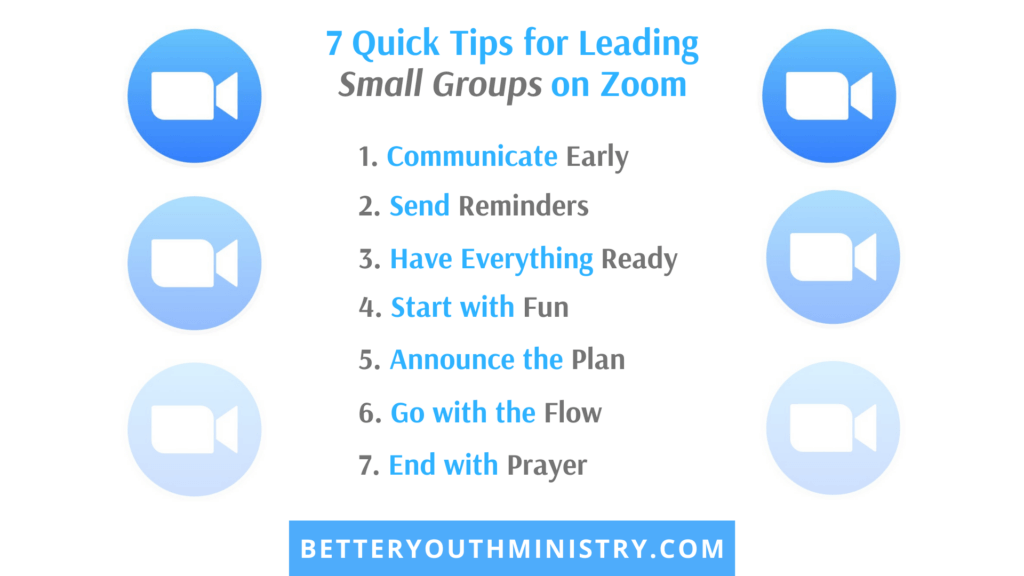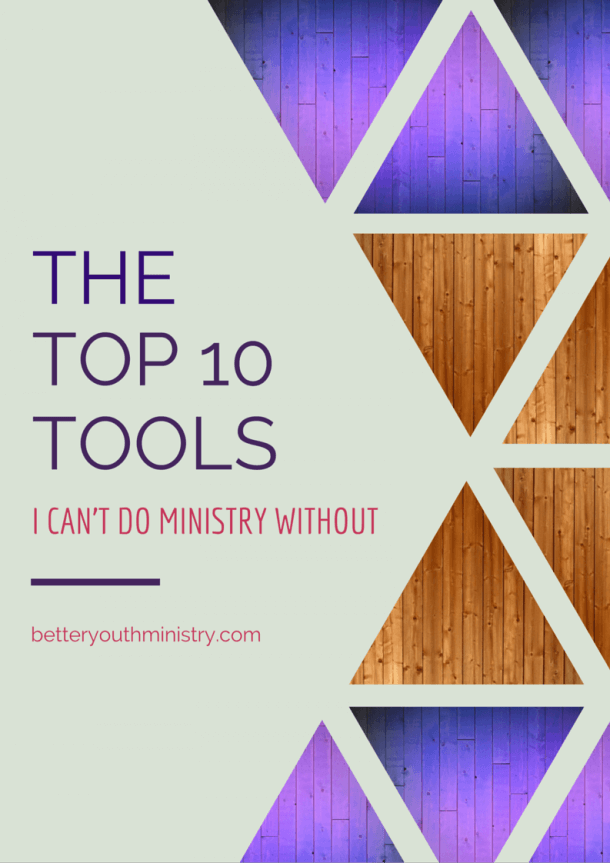The COVID-19 virus has forced a lot of churches to innovate very quickly. For many, that means experimenting with new ways to gather, teach, and worship. It’s been a stressful time that has stretched all of us, for sure.
But it’s not all bad.
I have a friend who is a senior pastor at an older, traditional church who has been doing something called “Everyday Church” on Facebook Live. He starts the video every night at 8:00 pm, reads a few Bible verses, and shares some devotional thoughts. He told me that his church has responded more positively to those ten-minute videos than they have to most of his sermons on Sunday mornings.
That’s a win!
The student ministry at my church has opted to use Zoom for our small group meetings until we can be together in person again. I’m a 6th-grade small group leader, and I just led my group this morning on Zoom for the first time.
It went really well.
In fact, several of the guys commented that we should do it like that even when the virus goes away! I think that had more to do with the experience being new and different for them, plus the fact that most of the guys had bedhead and were still in their pajamas!
Now that our first meeting in the Zoom Room is in the books, I wanted to share a few things that helped it go as well as it did.
7 Ways to Win with Small Groups Using Zoom
1. Communicate Early
Students won’t show up for the group if they don’t know it’s happening. Send emails to parents, texts to students, and post on social media that your group is meeting on Zoom. Be clear about the date, time, and Zoom meeting ID number.
It’s also not a bad idea to provide basic information about how Zoom works so there aren’t any questions right before the meeting is supposed to start.
2. Send Reminders
The small group meeting is a priority for you, but it can easily slide off the radar for a student at home. Because of that, you can’t just post about it and forget it about it. If you do, then they’ll forget about it too and you’ll be left with an empty online small group room.
Instead, you need to overcommunicate the details to both parents and students. I would highly encourage sending an email and/or text message one hour before you’re starting, and then send another one ten minutes before you start.
3. Have Everything Ready
Enter the Zoom meeting room a few minutes before your meeting is scheduled to start. This will give you a chance to familiarize yourself with all the buttons, options, and controls before you “go live.” Plus, you’ll be there to greet kids as they show up and assure them that they’re in the right place.
Also, if you’re planning to show a video or use any files from your computer, go ahead and get them ready so they’re easy for you to access at the right time. Be sure to close anything that you don’t want to be visible to students when/if you share your screen later in the meeting.
4. Start with Fun
Because of social distancing, many kids are starved for community and human connection right now. A lot of schools have stopped meeting and students aren’t seeing their friends as much as they would like. So, don’t rush right into the lesson.
Encourage them to use the alternate backgrounds feature on Zoom. Share a funny meme that you’ve seen or video that you’ve come across. Let them talk, laugh, and catch up. Don’t minimize the importance of small talk for your group. I would recommend that you disable the chat feature to keep everyone tracking with you. A question to start with is: What have you come across on Netflix this week that was surprisingly good? That question should generate plenty of feedback and give most of the kids a chance to chime in.
5. Announce the Plan
After a few minutes, mute everyone’s microphone and tell them what they can expect during your group meeting. This is helpful because it assures them that you have a purpose for meeting together.
For my group, I told them: “Hey guys, I’m loving our conversation our so far. We’re going to get started in about 4 more minutes. At that time, I’m going to mute everyone and we’ll watch a teaching video on here from [the youth pastor]. That’ll last for about 8 minutes. After that, we’ll talk about it for the next few minutes, and then we’ll stick around to chat about whatever you want to talk about for the last 10 minutes or so. If that sounds good, use your reaction button and give me a thumbs up.” Note: Anytime you can get them to engage is a bonus!
6. Go with the Flow
If the students seem to get distracted or take the conversation into crazy directions more than usual, that’s okay. This online form of meeting is new and different for them. Don’t fight against it; go with the flow.
Things will settle in after the next few weeks as they get more comfortable meeting this way. That weird poster hanging in that one kid’s room won’t prompt the same over-the-top reactions in week 3 as it did in week 1. In the meantime, ask your questions, move the conversation around, and move things along.
7. End with Prayer
Ask your group to share their prayer requests for anything that’s weighing on their hearts and minds. When I asked this today, the kids responded with a few personal things that had happened this week.
If no one mentions it, don’t forget to add a prayer request for the leaders around the world as they try their best to contain and deal with the coronavirus. Plus, pray that people who are sick will be comforted in their pain and, ultimately, be restored to health. After you pray, let them get back to their small talk and finish on a high note.

In Summary
My first small group meeting on Zoom wasn’t without its issues and glitches, but overall it was a good experience for me and the students. If nothing else, they got to see each other for the first time in a few weeks and I was able to get a little more comfortable using the technology.
Once again, the lessons I’ve learned so far are:
• Communicate early
• Send reminders
• Have everything ready
• Start with fun
• Announce the plan
• Go with the flow
• End in prayer
As always, I’ll work this week to make it an even better experience for everyone next week! I’ll keep you posted about how it goes.
Suggested Resources
Latest posts by Trevor Hamaker (see all)
- 7 Ways to Deal with Disruptive Students - December 18, 2024
- Fighting Frustration by Shifting Your Focus - December 18, 2024
- What is the Most Important Job of a Small Group Leader? - December 18, 2024
Did You Like This Post?
Sign up to get updates sent to your inbox each week!
You're in! Want more ideas and support for your ministry? Check out the BYM Community!
http://bit.ly/bymcommunity

